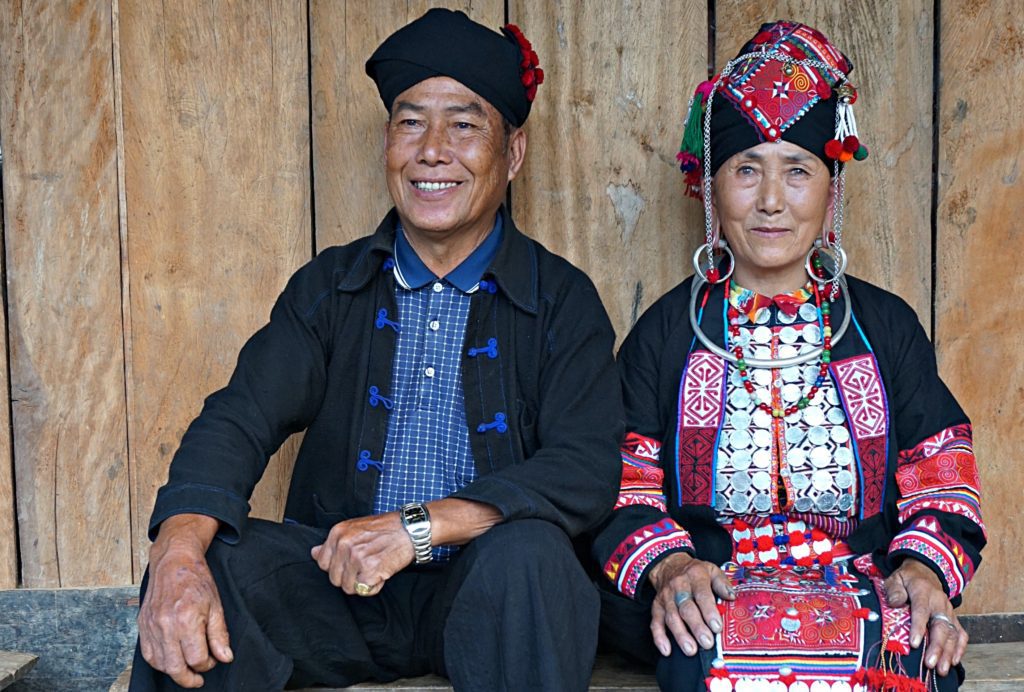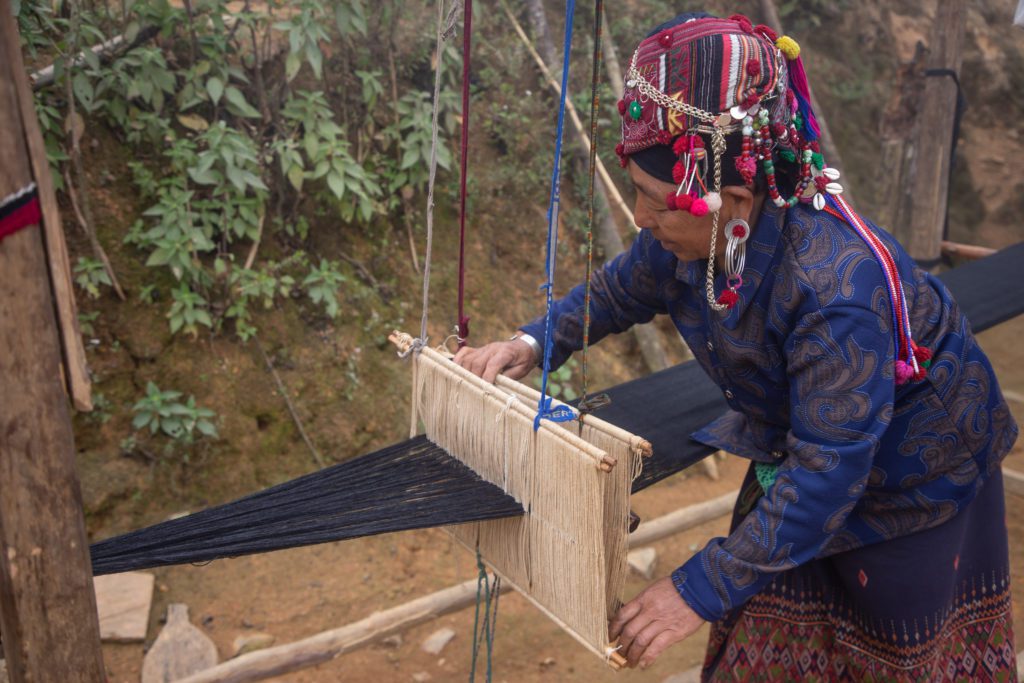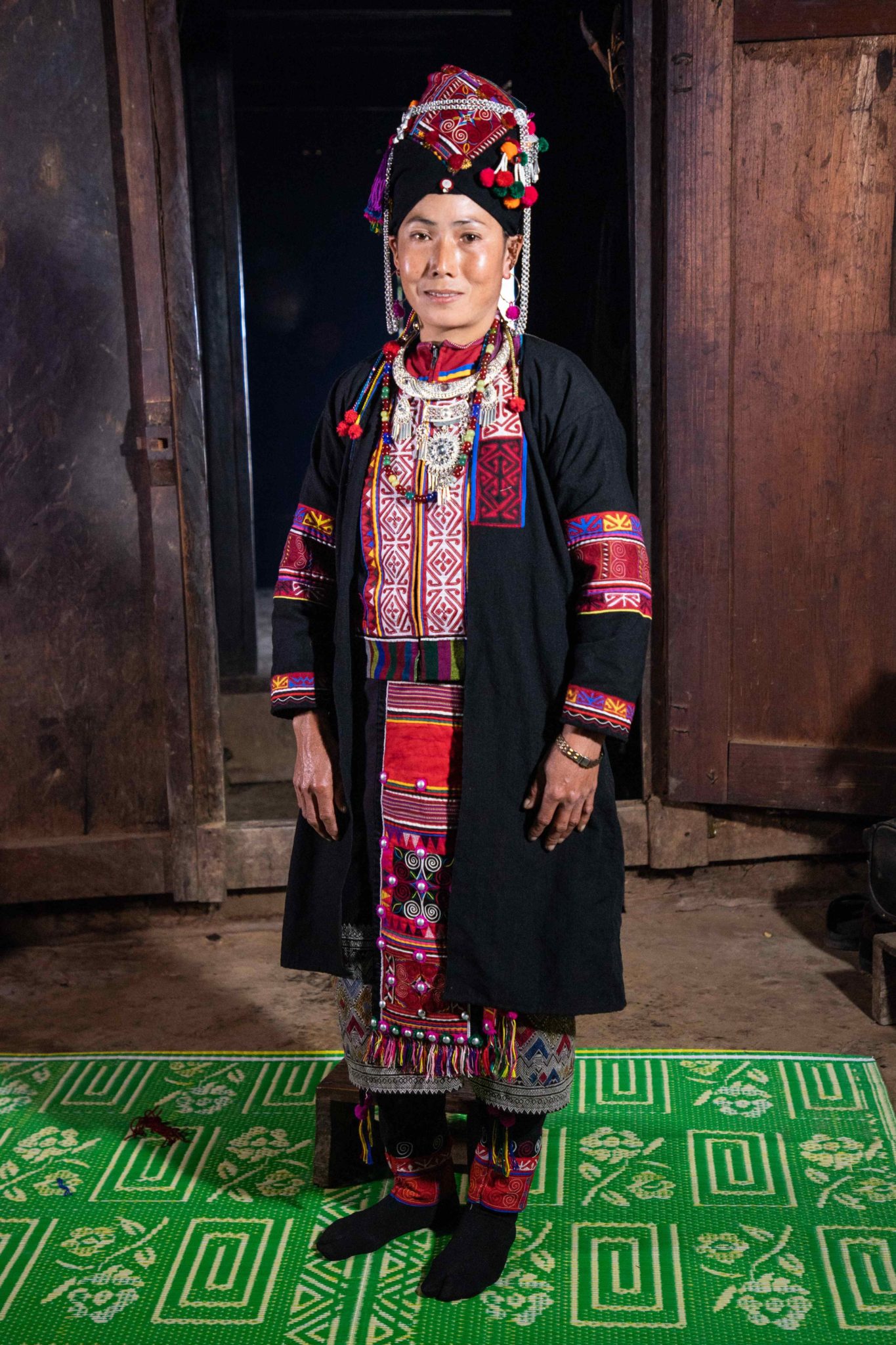No products in the cart.

The Oma
The base of Oma clothing is indigo-dyed, blue-black, handspun, handwoven cotton cloth, prevalent among many ethnic groups in the region. The general silhouettes and construction of Oma jackets, shirts, sarongs and pants are also not uncommon. What makes Oma clothing unique are the motifs adorning the women’s clothes and their combinations.
Oma motifs are bold and graphic shapes made of appliqué or embroidery. They are predominantly black, white, and red, but other colours can also be added, in particular blue, green, yellow and purple. Most motifs represent elements of fauna and flora, inspired by Oma’s surrounding environment. The most visible and representative motifs of Oma clothing are the different variations of spirals, and the friezes of appliqué motifs evoking chicken feet or frog hands.
The colourful and graphic Oma motifs are often accompanied by three-dimensional ornamentations such as pom-poms, braided and beaded tassels, coins, or pendants. The quality and materials of these ornaments, in particular the coins, can signal the economic status of the wearer.

While in the past inhabitants of Laos would only wear clothing they made themselves, the availability of inexpensive manufactured clothes in local markets now gives them the opportunity to choose what to wear and when to wear it. Nowadays, wearing a full traditional outfit or part of one is more a matter of choice and occasion, somewhat increasing the outfit’s significance. Traditional outfits are worn on three main occasions: important events (celebrations such as weddings and new year, rituals), inter-ethnic meetings (cultural festivals organised by the government), and context of representation such as photo shoots for family portraits or for social media. Some women however, continue to wear the traditional Oma head and leg wraps on a daily basis, that they wear together with a Lao-style tubular skirt (“sinh”) and a manufactured t-shirt bought in the nearby market. Young girls also like to mix Oma traditional outfits and clothing considered as more “modern” for special events.
From a young age, Oma girls are familiar with traditional motifs as it surrounds them — on the head wraps of their elders, on the hats babies start wearing at 4 months of age, and on clothing for special occasions. They will watch their mothers, grandmothers, and aunts working on appliqué and embroidery, and as they get older, may try simple embroidery patterns, or help with stitching pre-cut appliqué motifs to gradually learn the dexterity and techniques for creating even, fine, designs.

Photo credits:
